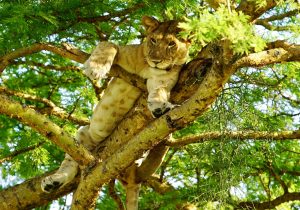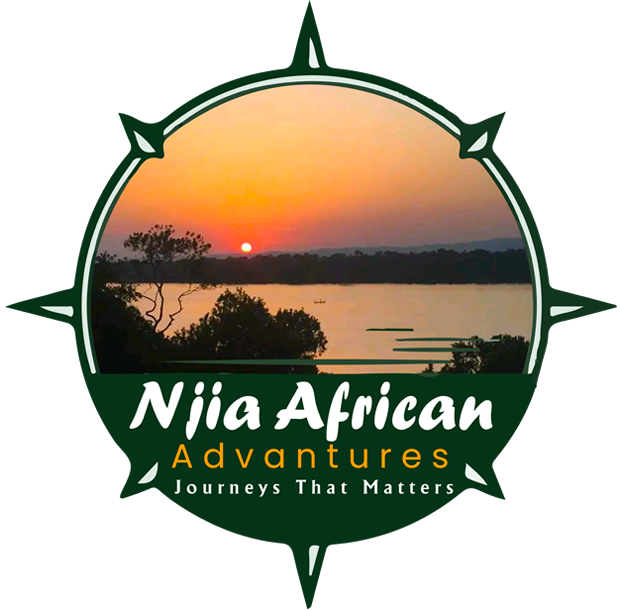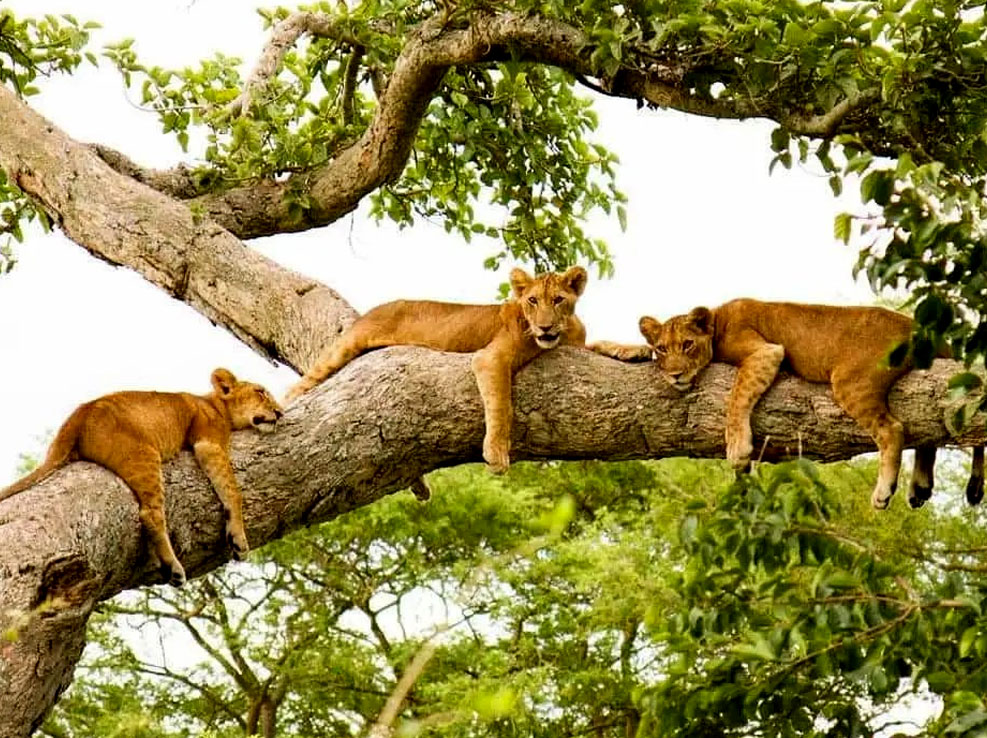Queen Elizabeth National Park: A Tapestry of Wonders in Uganda’s Wilderness
Queen Elizabeth National Park, located in the western part of Uganda, unfolds as a living masterpiece of biodiversity, where the sprawling savannahs meet the towering Rwenzori Mountains and the tranquil waters of the Kazinga Channel. This detailed exploration reveals the treasures that make Queen Elizabeth National Park a captivating destination, offering a harmonious blend of diverse ecosystems, iconic wildlife, and breathtaking landscapes.

1. Location and Geographic Diversity:
- Strategic Location: Situated at the foothills of the Rwenzori Mountains, Queen Elizabeth National Park is strategically positioned, covering diverse landscapes ranging from savannahs and wetlands to dense forests.
- Rift Valley Escarpment: The park is bordered by the Western Rift Valley, providing spectacular views and adding to the scenic beauty of the region.
2. Iconic Wildlife:
- Big Game Encounters: Queen Elizabeth National Park is renowned for its impressive population of big game, including elephants, lions, buffaloes, and leopards. Game drives offer a chance to witness these majestic creatures against the backdrop of the savannah.
3. Kazinga Channel Boat Safaris:
- Water Wonderland: The Kazinga Channel, connecting Lake George to Lake Edward, is a focal point of the park. Boat safaris along the channel provide unparalleled opportunities to observe hippos, crocodiles, and an array of bird species, including African fish eagles and pelicans.
4. Tree-Climbing Lions of Ishasha Sector:
- Unique Wildlife Experience: The Ishasha sector of the park is famed for its tree-climbing lions. Witnessing these big cats lounging on the branches of fig trees is a rare and extraordinary sight, adding an element of mystique to the safari experience.
5. Birdwatcher’s Paradise:
- Avian Diversity: Queen Elizabeth National Park is a haven for birdwatchers, boasting over 600 bird species. The diverse habitats, from wetlands to forests, attract both migratory and resident birds, making it a paradise for ornithological enthusiasts.
6. Crater Lakes:
- Scenic Wonders: The park is dotted with numerous crater lakes, remnants of volcanic activity. These scenic lakes, such as Lake Katwe, provide a tranquil setting for reflection and offer opportunities for birdwatching and exploring the unique landscapes.
7. Mweya Peninsula and Accommodations:
- Mweya Peninsula: Situated between Lake Edward and Lake George, the Mweya Peninsula serves as the park’s primary tourism hub. Visitors can enjoy panoramic views, luxurious accommodations, and easy access to the park’s attractions.
- Lodges and Camps: Accommodations within and around Queen Elizabeth National Park cater to various preferences, from luxurious lodges with stunning views to more rustic camps, providing a comfortable retreat after a day of exploration.
8. Community Conservation Initiatives:
- Engagement with Communities: The park actively involves local communities in conservation efforts. Community-based initiatives, such as sustainable tourism practices and revenue-sharing programs, aim to foster a sense of stewardship among residents and promote the coexistence of wildlife and communities.
9. Kyambura Gorge Chimpanzee Tracking:
- Primate Encounters: The Kyambura Gorge, also known as the Valley of Apes, offers a unique chimpanzee tracking experience. Guided treks into the gorge provide opportunities to observe and learn about these intelligent primates in their natural habitat.
10. Conservation Challenges and Sustainable Practices:
- Human-Wildlife Conflict: Like many protected areas, The park faces challenges such as human-wildlife conflict. Conservation efforts focus on mitigating these conflicts and ensuring the park’s long-term sustainability.
- Sustainable Tourism: The park embraces sustainable tourism practices, promoting low-impact activities and ethical wildlife viewing to minimize its environmental footprint.
Queen Elizabeth National Park stands as a testament to Uganda’s commitment to preserving its natural heritage. From the grandeur of the Rwenzori Mountains to the serenity of the Kazinga Channel, every corner of the park tells a story of coexistence between wildlife and the communities that call this region home. Njia African Adventures, with its dedication to responsible tourism, invites travelers to embark on an unforgettable journey into the heart of Queen Elizabeth National Park, where the wonders of the wild paint a canvas of enduring beauty.

